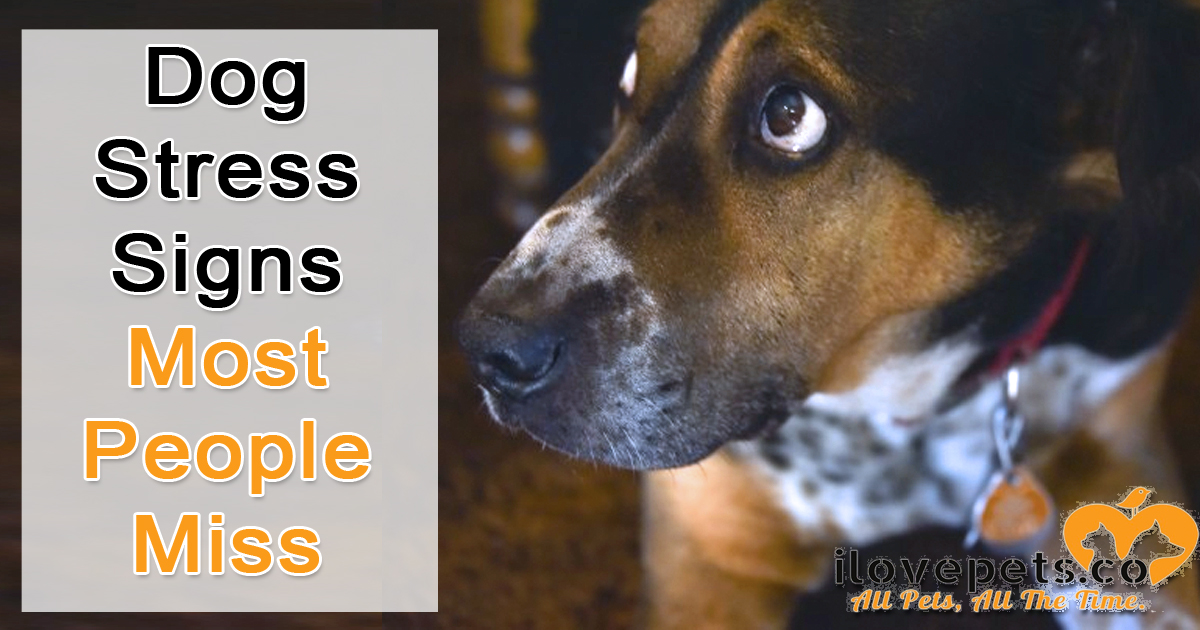
“It was so sudden,” they always say. “He attacked her out of nowhere.”
So many children and adults suffer from dog bites that seemingly occur out of the blue. Of course, this is rarely the full story. Dogs give off many signs of stress before they resort to a bite. When a dog is in a situation that makes him feel overwhelmingly scared, he simply can’t help but bite to get out of it.
It’s tragic. Dogs are typically euthanized after severe bites, even if they have no history of aggression. It’s also understandable; few people would feel safe living with a dog after it has attacked a human.
These attacks can be prevented in many cases. By recognizing stress signs, avoiding confrontational styles of training, and teaching kids how to handle dogs safely, humans and dogs can live together peacefully.
How We Stress Out Our Dogs
The biggest reason to understand signs of stress in dogs is to avoid dog bites. Dogs can be stressed by things that we find soothing. A hug, especially from a child or a person the dog does not know, can be very scary for a dog. Dogs, by nature, are not huggers. Their instinct is to avoid being surrounded by anyone or anything. Yet, many dogs headbutt their way into their owners’ arms, insisting on a cuddle.
Only hug your dog for short periods of time. Don’t wrap both arms around your dog, and avoid hovering over them. Pause to see if the dog needs some space. Never let children hug your dog, and don’t be afraid to let people know when they’re getting too rough.
There’s other ways that we make dogs uncomfortable, too.
Using physical force to train dogs puts them in a state of fear and frustration. In that state, it’s impossible for them to learn. Force can be as innocuous as pushing your dog’s butt down to make them sit. While it doesn’t hurt, it’s not an effective way to train. Dogs tend to resist pressure. Yanking the leash or pushing down the rump just makes your dog want to do the opposite of what you’re attempting.
Nail clipping, vet visits, teeth-brushing and other necessary procedures are stressful for dogs. While these situations are unavoidable, you can work on them gradually to help your dog learn to tolerate them.
Dogs also get stressed when they’re confused during a training session. Keep training short, easy and end on a good note. If your dog doesn’t succeed after 3 attempts, you’re moving too fast – make it easier for them to get it right.
We can also stress out our dogs when trying to get that cute picture. Social media has made us hungry for likes – and it’s easy to forget that our dogs didn’t sign up for it. Give your dog plenty of time, treats and patience when posing them for pictures or putting them in outfits. It’s okay to get cute photos, just make sure you put your best friend first.
Not sure if your dog is stressed? Learn the signs!
Signs Of “Stop Right Now” Stress
Dogs use body language to speak to other dogs as well as people. Unfortunately, many of us are not fluent in “doggy-speak,” causing us to miss signs that our dogs are practically screaming for help – without saying a word.
Common signs of stress in dogs:
- Yawning when they’re not tired
- Panting with a wide, not soft, “grin”
- Drooling
- Ears flattened down
- Looking away, avoidance
- Whites of eyes visible, known as “whale eye”
- Sudden refusal to take tasty treats
- Lip licking
- Forceful licking of your face
Calming signals are a sure sign your dog is trying to diffuse a situation. A stressed dog might yawn, lick their nose or sniff the ground to avoid confrontation. If these signals are ignored, the dog might escalate to growling, bared teeth, and eventually, a bite.
Recognizing stress signals isn’t just about bite prevention. Keeping your dog stress-free as much as possible makes training more enjoyable for both of you.
De-Stress Your Dog
If you notice any of the above stress signals, the best thing to do is end the event or situation that is causing your dog stress. Nothing is more important than making your dog feel comfortable. As your dog’s guardian, you need to do your best to make them feel safe.
Treats can help relax your dog, but this won’t work if your dog is too stressed to eat. The digestive system slows down when an animal feels they are in danger. However, you can move your dog a great distance away from the stressor and see if they will then take treats.
A study in the Journal of Veterinary Behavior shows that classical music is soothing for dogs. This is great for car rides, thunder storms and nail clipping.
Essential oils, especially lavender, can also calm your dog. Just a drop on your dog’s collar is enough for their powerful sense of smell. You might also want to try premade dog calming sprays made with essential oils.
Avoid putting your dog in unnecessary, stressful situations, and do your best to soothe them when stress cannot be avoided. You are your dog’s advocate – they’re sure to appreciate it when you relieve them from their fears.

LEAVE A COMMENT below to share your thoughts and experiences. We would love to hear from you!
Don’t forget to SHARE this article on your favorite social media outlets:







[…] dogs are prone to resource guarding behaviors. They may turn away, growl, show stress signals, or even bite if you try to take away a precious item like a yummy […]